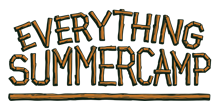
Hey, Camp Friends!
Are you ready to become a bird-watching pro? Identifying birds can be a fun and rewarding activity, especially when you’re out in nature. Today, we’re going to learn how to identify different birds using some simple tips and tools. Let’s dive in!
Different Ways to Identify Birds
There are a number of different ways to know what kind of bird that is in the yard. What does it look like? What does it sound like? And what sort of area does it like to hang out in? Take a deeper look:
Visual Identification:
Start by comparing the bird’s size and shape to birds you already know. Is it small like a sparrow or large like a hawk?
Color and Patterns: Look for the bird’s colors and any unique markings, like stripes or spots.
Field Marks: Focus on specific features like wing bars, eye rings, and beak shape.
Behavior: Observe how the bird moves, flies, and interacts with its environment.
Auditory Identification:
Bird Calls and Songs: Each bird has a unique call or song. Learn to identify them by listening carefully.
Apps and Recordings: Use birding apps or recordings to familiarize yourself with different bird sounds.
Habitat and Range:
Where to Look: Identify birds based on their preferred habitats, like forests, wetlands, or urban areas.
Seasonal Variations: Understand migration patterns and seasonal changes in bird populations.
Tools and Resources for Bird Identification
Using the right tools enhances your experience, allowing you to observe birds up close and identify them accurately. Let’s go over the most powerful Bird ID tools in any birdwatcher’s arsenal!
Field Guides and Apps:
Field guides like "The Sibley Guide to Birds" or apps like Merlin Bird ID are great for identifying birds.
Bird Watching Gear:
Binoculars: Choose binoculars that are comfortable and provide a clear view.
Notepads and Cameras: Keep a notepad to jot down observations and a camera to capture moments.
Online Communities and Forums:
Bird Watching Communities: Join groups like eBird or local bird watching forums to get advice and share your sightings.
Tips for Successful Bird Watching

When and Where to Watch:
Best Times: Early morning and late afternoon are the best times for bird watching.
Staying Quiet and Still:
Minimize Noise: Be quiet and still to avoid scaring birds away.
Keeping a Bird Journal:
Track Sightings: Keep a journal to track your sightings and improve your identification skills.
By following these tips and using the right tools, you'll be on your way to becoming a bird-watching expert. So grab your binoculars and field guide, and head outside to explore the wonderful world of birds. Happy bird watching, adventurers!
- John














